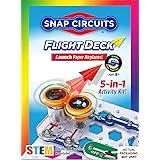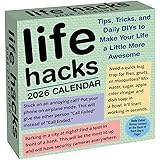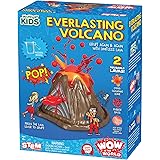Are you tired of mass-produced accessories and craving truly unique pieces that reflect your personal style? Do you often wonder how to make cool jewelry items yourself without breaking the bank? The video above showcases an incredible array of DIY jewelry projects, offering twenty creative ways to craft stunning accessories right from your home. This guide will expand on those captivating ideas, delving deeper into the techniques and materials, helping you transform everyday objects into personalized treasures.
The Allure of DIY Jewelry Making: Craft Your Unique Style
There’s an undeniable charm to wearing something you’ve created. Handcrafted items tell a story, embodying effort, creativity, and personal expression. While mass-produced jewelry is ubiquitous, it often lacks the distinct character that handmade pieces possess. Crafting your own accessories allows for complete customization, letting you match your jewelry to specific outfits, moods, or occasions.
Moreover, embracing DIY jewelry making is an economical choice. Premium materials can be costly when purchased as finished goods, yet sourcing raw components often significantly reduces expenses. Beyond the financial benefits, the act of creation itself offers immense satisfaction and a creative outlet. According to recent craft industry reports, the DIY segment continues its upward trajectory, with a significant percentage of enthusiasts—often cited as over 60% in various surveys—engaging in crafting for stress relief and creative expression.
Upcycling Everyday Items into Stunning Accessories
One of the most exciting aspects of DIY jewelry projects is the potential for upcycling. Common household items or forgotten treasures can be transformed into fashionable statements. This approach not only promotes sustainability but also encourages innovative thinking. The video hints at various ingenious ways to repurpose everyday materials.
Nail Polish Art: A Spectrum of Possibilities
Nail polish isn’t just for manicures. Its vibrant colors, glossy finish, and quick-drying properties make it an excellent medium for jewelry. You can use nail polish to add intricate patterns to plain beads, create faux enamel effects on metal components, or even marble plastic elements. To achieve a stunning marbled effect, simply float drops of different colored nail polish on water, swirl them gently, then dip your chosen object. This technique allows for truly unique designs.
Despite its visual appeal, nail polish requires careful handling for durability. Applying a clear top coat can protect your designs from chipping and wear. This additional layer enhances the adhesion and longevity of your customized pieces, ensuring your beautiful handmade accessories remain vibrant.
Glue & Adhesives: The Foundation of Quick Crafts
Adhesives are the unsung heroes of many a craft project. The video prominently features “GLUE” and “SUPER GLUE,” signifying their importance in securing components. Super glue, or cyanoacrylate adhesive, forms strong bonds quickly, ideal for small, precise attachments. However, its fast-drying nature demands accuracy.
Conversely, craft glue or hot glue offers more working time and is excellent for larger surfaces or for adhering dissimilar materials. For instance, textile scraps can be transformed into unique fabric beads using strong fabric glue, while a hot glue gun allows for sculptural elements or quick attachments of embellishments. Understanding the chemical properties of different bonding agents is key to selecting the right adhesive for each element in your **personalized jewelry projects**.
Intriguing Chemical Crafts for Custom Jewelry Projects
Some of the most captivating cool jewelry items you can make yourself involve a touch of science. The video provides glimpses into processes that leverage chemical reactions to create truly extraordinary pieces, moving beyond simple assembly.
Growing Your Own Crystals: A Scientific Sparkle
Imagine wearing jewelry featuring genuine, self-grown crystals. The video briefly hints at using specific compounds like KAl(SO₄)₂ (Potassium Aluminum Sulfate) and KCr(SO₄)₂ (Potassium Chromium Sulfate), commonly known as alum and chromium alum, respectively. These compounds, when dissolved in hot water and allowed to cool slowly, form beautiful crystal structures. The process typically involves creating a supersaturated solution and waiting for the crystals to nucleate and grow.
Creating crystal jewelry requires patience; the text “AFTER 24 HOURS” indicates a typical waiting period for significant growth. Once formed, these delicate crystals can be carefully extracted and incorporated into pendants or earrings, offering a unique, natural shimmer. The specific structure and color of the crystals depend on the initial compound used, with chromium alum producing stunning purple-to-blue hues, contrasting with the clear or white crystals from regular alum.
Mood Pendants and Color-Changing Wonders
The allure of a “MOOD PENDANT” is timeless. These fascinating pieces react to temperature changes, altering their color based on the wearer’s body heat. This effect is achieved using thermochromic pigments, which are specially formulated “COLOR-CHANGING PAINT.” These pigments contain leuco dyes that undergo reversible molecular changes at specific temperatures, shifting their light absorption and reflection properties.
While often associated with novelty, integrating color-changing elements into your **custom jewelry projects** can be sophisticated. You can paint these pigments onto the back of glass cabochons or embed them within resin. This adds an interactive element to your unique designs, making each piece a conversation starter and a dynamic accessory.
Mastering Resin Casting for Durable Handmade Jewelry
For those seeking more durable and professional-looking handmade jewelry accessories, resin casting is an indispensable technique. The video highlights “CASTING RESIN PART A” and “CASTING RESIN PART B,” indicating the use of a two-part epoxy resin system.
The Art of Epoxy Resin: Parts A & B
Epoxy resin consists of two components: the resin (Part A) and a hardener (Part B). When mixed in precise ratios, a chemical reaction called polymerization occurs, transforming the liquid into a solid, clear, and incredibly durable plastic. This process generates heat and leads to the hardening of the material.
Resin is exceptionally versatile. It can encase dried flowers, glitter, small photographs, or found objects, preserving them permanently within a transparent shell. The “ALLOW TO DRY” and “LET DRY” prompts in the video underscore the crucial curing time, which can range from a few hours to several days depending on the type of resin and ambient conditions. Proper mixing and patience are paramount for successful resin pieces, ensuring a smooth, bubble-free finish for your **jewelry making supplies**.
Oven-Cured Creations: A Hot Take on Crafting
The mention of “180°C 10 MIN” suggests another powerful method for creating durable components: oven-cured crafts, most notably polymer clay. Polymer clay is a versatile modeling material that remains pliable until baked at specific temperatures, typically between 110-145°C (though some specialized clays or processes might use higher temperatures for shorter durations, aligning with the 180°C mentioned). Once cured in a conventional oven, it becomes rigid and permanent.
This medium allows for intricate sculpting, texturing, and color blending, opening up a world of possibilities for beads, pendants, and charms. The ability to create detailed, lightweight shapes makes polymer clay a favorite among DIY jewelry makers. Different finishing techniques, such as sanding and buffing, can further enhance the professional look of your oven-cured designs.
Practical Tips for Aspiring DIY Jewelry Makers
Embarking on your journey to make cool jewelry items yourself is exciting. To ensure success and safety, a few foundational tips are essential. Start with a clear workspace and gather all your materials beforehand. Small, specialized tools like needle-nose pliers, wire cutters, and round-nose pliers are crucial for many projects, especially when working with wire and findings. However, many beginner projects, as suggested by “5-MINUTE CRAFTS,” require minimal tools.
Safety should always be a priority. When working with glues, resins, or chemical compounds for crystal growing, ensure adequate ventilation and wear appropriate protective gear like gloves and eye protection. Familiarize yourself with the specific instructions and safety warnings for all chemicals and tools you use. The video serves as a fantastic springboard, offering visual cues for cool jewelry items you can make yourself, encouraging experimentation and fostering a love for personalized, handcrafted adornments.







